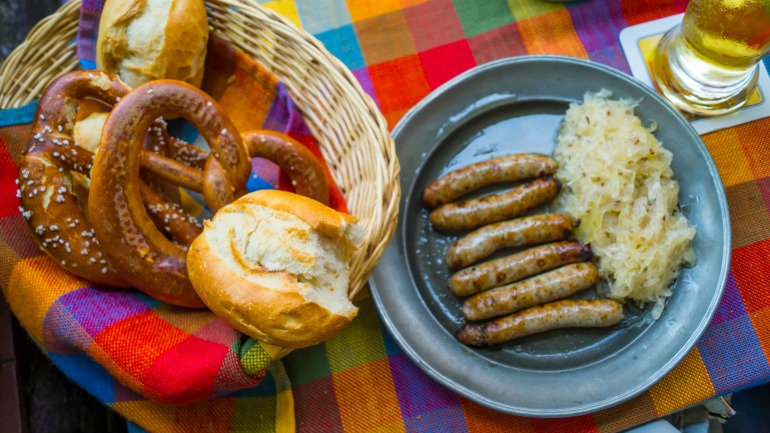How to take cabbage from yuck to yum every time

Of all the vegetables cabbage is perhaps the most maligned. The versatile vegetable was almost ruined for an entire generation thanks to mothers who boiled it to within an inch of its life and then demanded their precious offspring eat every last bite.
And once you did manage to gulp the stuff down there was the inevitable chorus of farts echoing around the house for hours afterwards.
However, when cooked the right way cabbage is a wonderful ingredient full of flavour, crunch and colour. Incidentally, it’s also jam-packed with vitamins and minerals, such as vitamin C, calcium and iron, which are believed to help prevent heart disease and diabetes.
Cabbage is a member of the brassica family and comes many varieties, with red, savoy, napa and green (cannonball cabbage) being the most common. It’s commonly found in a variety of dishes from around the world, with some of the most well-known being sauerkraut, kimchi (a staple in Korean cuisine) and coleslaw.
It’s also a rich source of sulfur-containing compounds called glucosinolates, which Sydney-based nutritionist Gabriella Ratner explains have been shown to contains cancer-fighting properties, while other cruciferous vegetables, such as cabbage, broccoli and kale has been found to lower inflammation.
“They have also been linked to a long list of health benefits, including improved heart health, weight loss and reduced inflammation,” Ratner says.
Cooking with cabbage across the globe
Thanks to its many delicious varieties, cabbage is readily found in all sorts of dishes around the world. It’s versatile texture and ability to absorbed the flavours means it works well both cooked and raw dishes.
Stuffed cabbage rolls, typically filled with ground meat, rice, herbs and spices, are a classic Eastern European specialty.
In Germany, it’s fermented into sauerkraut, and in Korea, into kimchi — a traditional side dish made from salted and fermented vegetables, most commonly napa cabbage. And in Asian, cabbage — specially savoy cabbage — is always a good idea for stir fries.

This humbled vegetable is so much more than a salad favourite
Apart from crafting tasty coleslaw every time, Ratner says cabbage can be prepared in a number of ways — it can be boiled, steamed, sautéed or even pickled.
“Cabbage can be sautéed with balsamic and butter, made into sauerkraut, used in cabbage rolls or made into a stir-fry,” she says.
Sounds tasty? Here’s a delicious cabbage stir fry recipe to try!
Beef and cabbage stir fry
Ingredients
Stir fry sauce
- 1 tbsp soy sauce
- 1/2 tbsp sesame oil
- 1/2 tbsp Sriracha (chili sauce)
- 1 tbsp curry powder
Stir fry
- 1/4 head green cabbage
- 1/2 carrot
- 2 green onions
- 1 tbsp olive oil/coconut oil
- 250g minced beef
- 1/2 clove garlic
- 1/2 tsp fresh grated ginger
- Pinch of salt and pepper
- 1 tbsp sesame seeds
Method
- Prepare the stir fry sauce first. In a small bowl stir together the soy sauce, curry powder, toasted sesame oil, and Sriracha, Set the sauce aside.
- Shred the vegetables so they are ready to go when you need them. Shred the cabbage, shred the carrot. Slice green onions and grate ginger.
- Heat a large pan/wok over medium heat. Once hot add the cooking oil, beef, garlic, ginger, and a pinch of salt and pepper. Cook the beef until browned (about five minutes).
- Add the cabbage and carrots to the pan and stir and cook until the cabbage is wilted. Stir in the prepared sauce and the green onions. Top with a sprinkle of sesame seeds.








 Proudly Australian owned and operated
Proudly Australian owned and operated